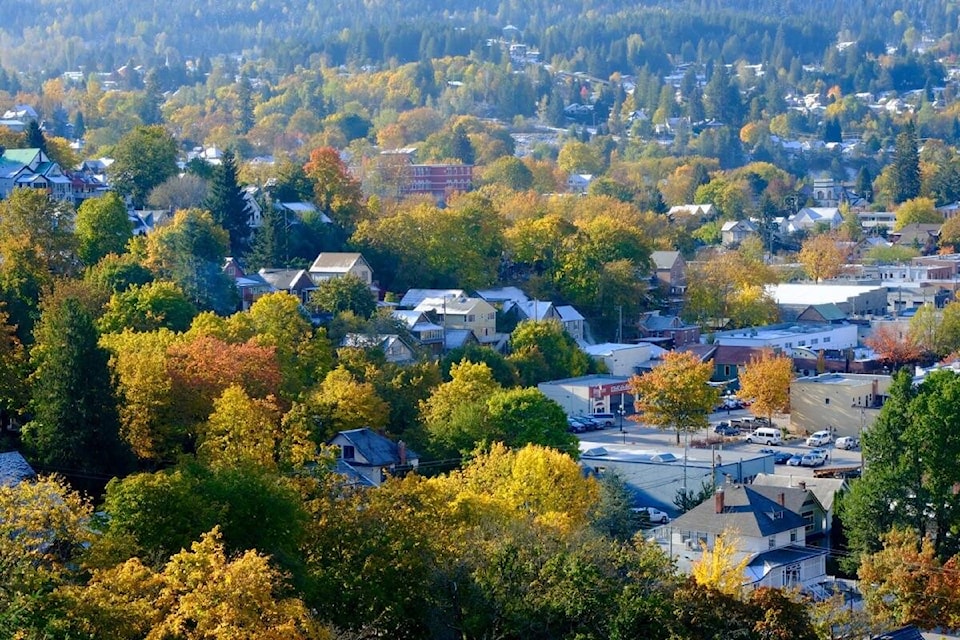by Timothy Schafer
Local Journalism Initiative Reporter, The Nelson Daily
It’s all uphill from here for real estate development in the city.
The city is putting in place legislation and regulations to deal with development on land that is greater than a 20 per cent slope, with much of the city’s infill housing lots being already developed.
Currently, there are no hillside development standards in the city within the Subdivision and Development Servicing Bylaw, with the road rights-of-way and widths assuming more gentle terrain.
Although the bylaw was amended in 2018 to allow the director of public works to vary the standards in the bylaw under a variety of different conditions — steep terrain, location of existing infrastructure — it was felt that hillside road rights-of-way and widths should be explicitly addressed in the bylaw to provide clarity to applicants on the minimum requirements for steep terrain, said city senior planner Natalie Andrijancic.
“Obviously, we are built on a mountain so it can be challenging for development to move forward,” she said in her report to council during a March 8 regular meeting in chambers at City Hall.
She said if developers are going to use these standards they have to submit a report with a detailed discussion about items such as slope stability, retaining walls, utilities, driveway layout, cut-and-fill slope and snow storage locations.
“And I just want them to think about that early on, just to ensure that there is good planning, because later when we try to add those things in, then it becomes problematic,” she explained. “I’m just trying to ensure successful development.”
Looking up
The amendments to the Subdivision and Development Servicing Bylaw are expected to streamline the planning approval process and facilitate development.
The proposed changes are:
• In areas with steep topography (20 per cent or greater), the consulting engineer may submit a request in writing to the approving officer for authorization to utilize the hillside road standards.
The use of hillside standards will require a design report prior to approval outlining a number of details about the site that must be considered when developing on steep topography, such as slope stability, retaining walls, utility layout, driveway access profiles, cut and fill slopes, and snow storage locations.
• The proposed roadway standards have been crafted based on a best practice review from other municipalities in B.C. with similar climates and steep topography.
The hillside standards would allow for a reduced right-of-way width and a slightly narrow road than current rural road standards.
• The amending bylaw specifies a slower road speed of 30 kilometres per hour to account for the reduced road width and the challenging topography.
Councillor Nicole Charlwood wondered if caution was needed in pushing development up the slope of the mountain in Nelson.
She pointed to a recent presentation by local hydrologist and ecologist that at over 20 per cent slope there was a lot more risk to adding a road, and the changes that it can bring in terms of runoff are greatly increased.
“So I see a lot of checks in this list,” she said, and wondered if those considerations would be forthcoming in the reporting to the city.
“Slope stability is definitely a concern of ours and most sub-divisions almost always come with a geo-technical report,” replied Andrijancic. “And if we are worried about slope stability they can also look at landslide and flooding and they will also talk about existing conditions.
“And the steeper the site the more challenging the site and the more factors need to be considered.”
City manager Kevin Cormack said some preliminary work has been done to assess whether development was possible on some of the steeper slopes of Nelson.
“The regional district has done a broad look at all of the creeks in the area,” he said. “There is some mapping that is specific to Nelson and we are looking at that and determining what additional work we should do right now.
“Right now we are identified as low risk, but we are going to look at their report and work with a geotech to determine should we be doing additional work soon.”
Andrijancic said once the amendment was adopted it would not create a whole new market for real estate development in the city.
“Just to be clear, we don’t anticipate that these will be throughout the city, but in just a few select locations where it is kind of at the edges of the city with steep terrain, limited development nearby, and where standard roads are not achievable,” she said.
But staff at Development Services felt it appropriate to put in hillside development standards that would provide clarity to applicants, and what the standard is they need to meet.
